Monthly Archives: July 2021
Starting Points for Abstraction Week 4: Emotion and Intuition
July 13, 2021
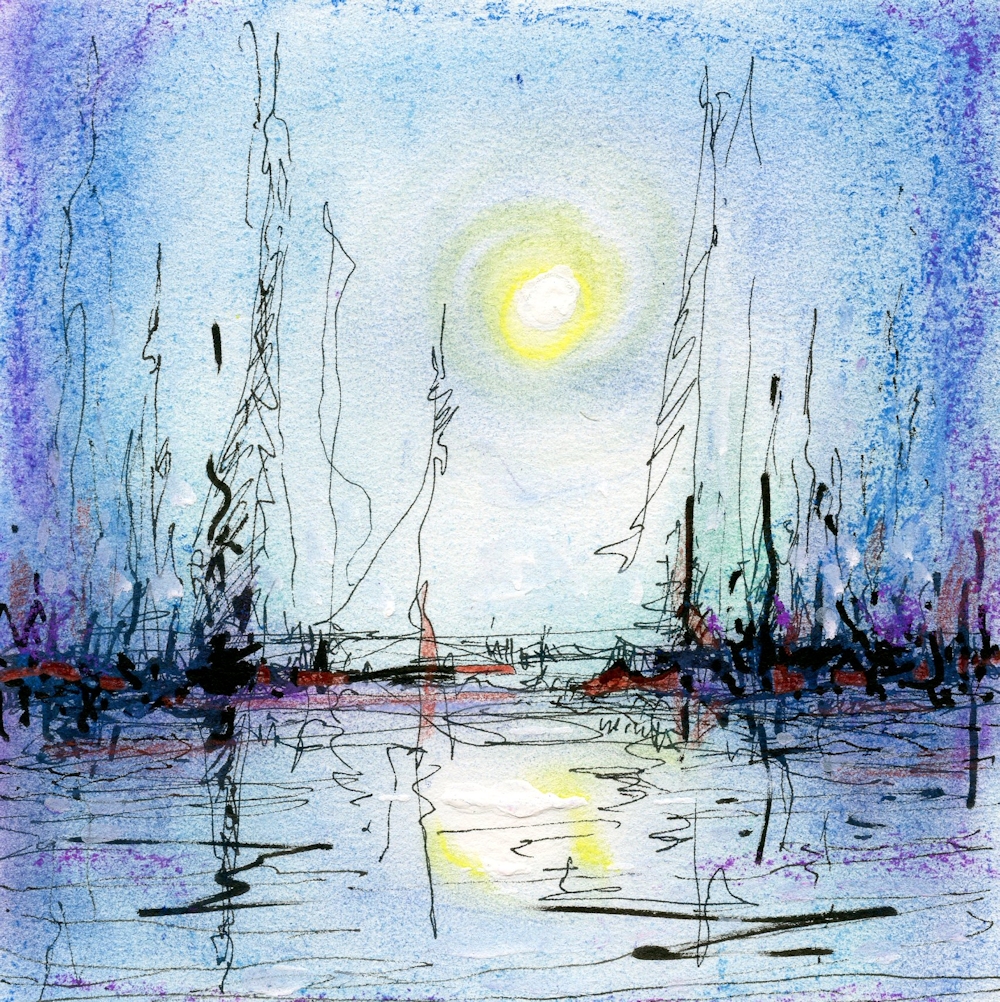
Intuitive drawing and mixed media
Jackson Pollock quote:
« One day, a critic wrote that my works didn’t have a starting point or an end. He wasn’t looking to pay me a compliment but he did”, said the artist.
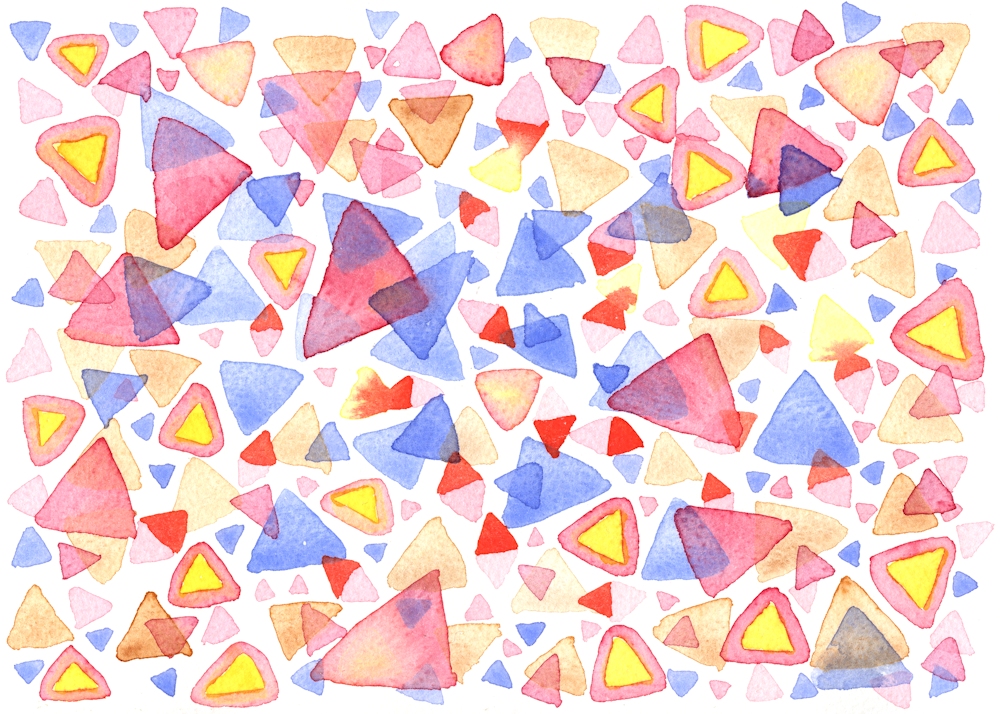
Intuitive Watercolour
It is no surprise that some of the most famous artists with abstraction as the greater part of their work are either musicians or have both a passion for and knowledge of music. It is after all the most abstract of the arts and has a huge power to communicate emotion from laughter to despair.

Intuitive Drawing and Watercolour
Colour and music
These include; Rothko, Kandinsky, Klee, Mondrian, Pollock. Individual works are often described as sorrowful, rhythmic, playful, loud, adjectives you could just as easily use for music. Several worked in an abstract style with the conscious intent of finding in art and equivalent language to music. Klee likened the colours in a paint box to musical notes. Kandinsky heard colours. When he saw yellow he heard the exuberance of the trumpet. Pollock’s action paintings are full of the rhythm of his movements as he dripped his paint. Some of Klee’s works appear as symbols on lines almost resembling staves. Kandinsky used musical terms such as Improvisation, composition, fugue when assigning titles to his works. Klee’s most abstract grid paintings contained variations on a theme; rows of different hues would be reversed or more subtly changed to create movement.
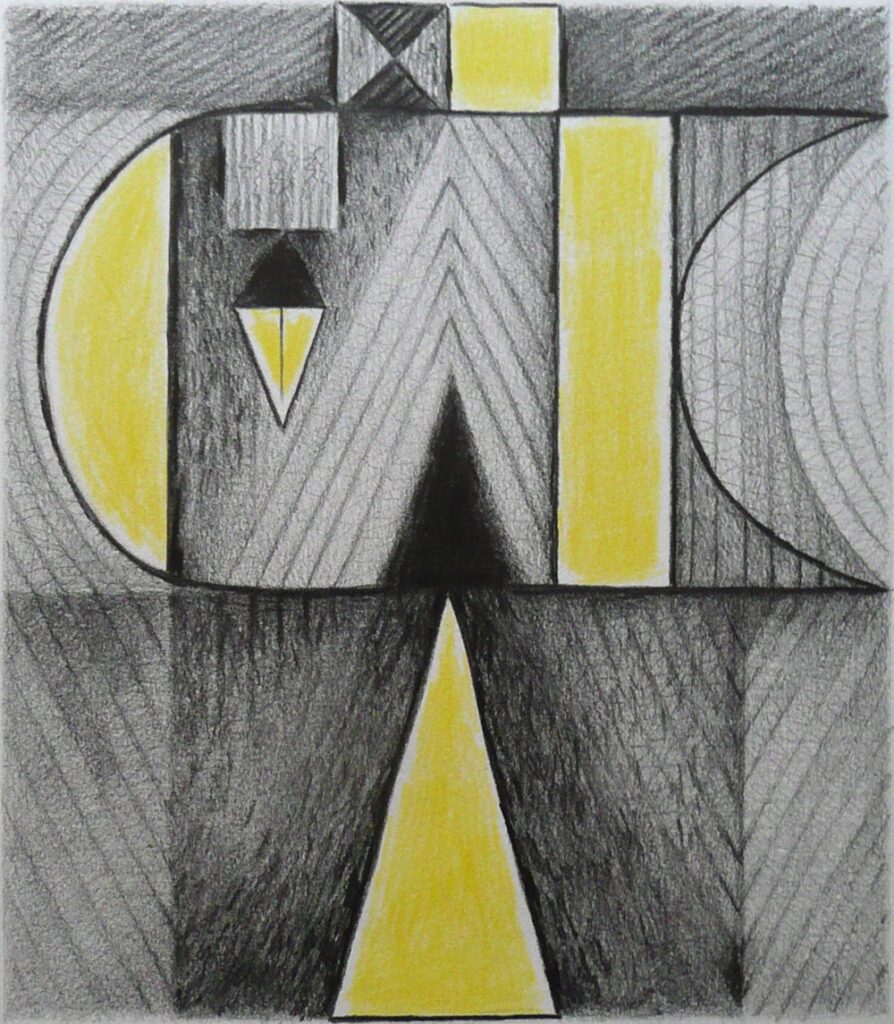
Pencil and wax crayon
Thought about this one.
Think of music that makes you feel; sad, happy, relaxed, excited, thoughtful, serene etc.
What colours do you associate with these?
Practical
Look at works by Jackson Pollock, Lee Krasner, Mark Rothko, Patrick Heron and William Baziotes
https://www.pinterest.co.uk/jhall1282/abstraction/jackson-pollock/
https://www.pinterest.co.uk/jhall1282/abstraction/lee-krasner/
https://www.pinterest.co.uk/jhall1282/abstraction/mark-rothko/
https://www.pinterest.co.uk/jhall1282/abstraction/patrick-heron/
https://www.pinterest.co.uk/jhall1282/abstraction/william-baziotes/
Then use line and/or colour to make a work with a definite emotion in mind. This may be inspired by a piece of music, person or experience. It may be an emotion in the sense of sad, happy etc. or the thrill of a roller coaster, exhaustion after running, any experience that you feel inspired to translate into colour and/or line.
The Action painters like Pollock made a start and added each step intuitively. It is for you to choose whether to plan or just to start and see where you pencil or brush leads you. Music is useful as it has a rhythm that can be expressed by line. Try experimenting with music mimicking the rhythm first with a broad brush and then on the same paper with a narrow brush or a rigger. If you are feeling less brave try pencil or crayon.
During the session we will do short exercises exploring how different lines and colours can express very different emotions, followed by developing one of the resulting drawings as a more considered work.
Have the following ready ;
Inexpensive A4 paper (cartridge or copier paper); a soft pencil or dark coloured pencil; a dark or bright wax crayon; your choice of medium and an appropriate support for developing the painting inspired by your drawing.
Your paintings:
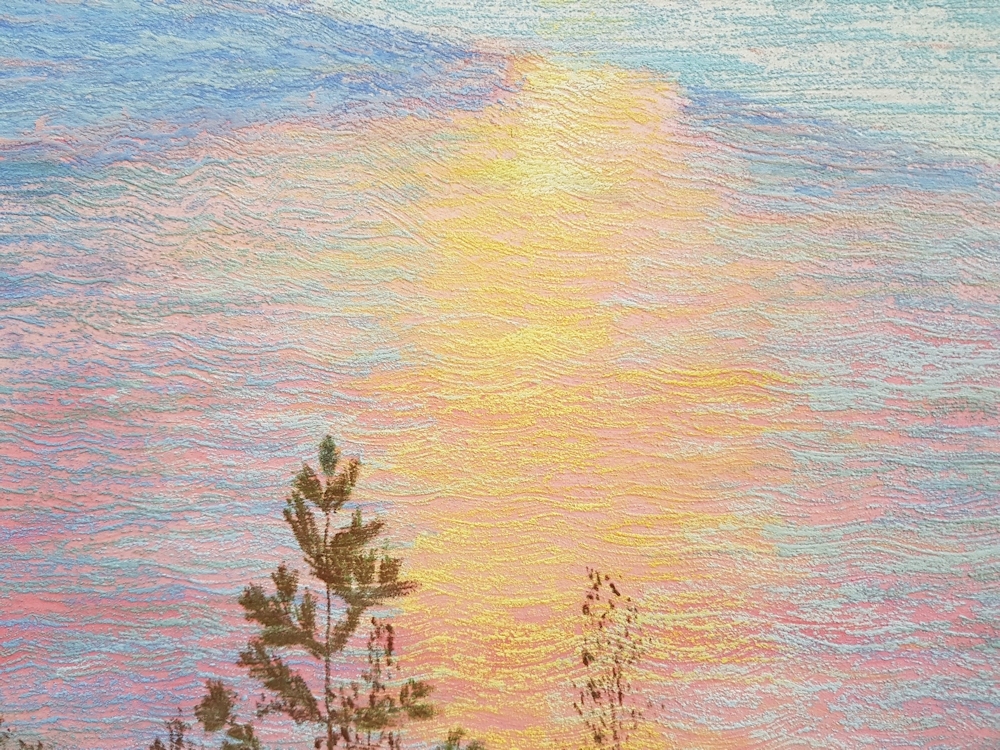
Pastel on Watercolour over textured Gesso
by Malcolm

PVA and ink by Sandra

by John
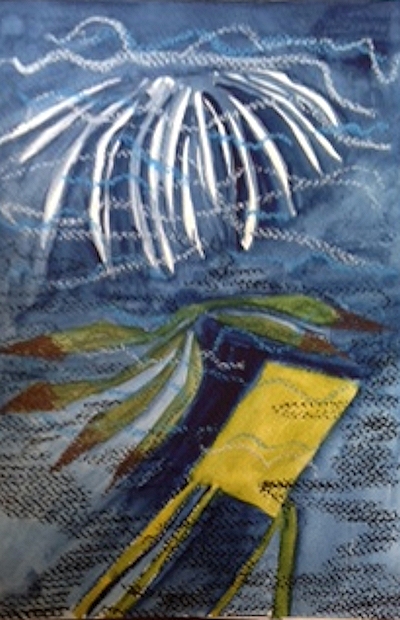
In the Deep Sea
by Elizabeth

The Olgas Western Australia
by Elizabeth
Starting Points for Abstraction Week 3: Starting from Observation and Memory
July 6, 2021
Starting an abstract painting from observation or memory is something we looked at in passing when considering Paul Klee’s abstractions of the landscape and towns of Tunisia. Although many of these were based on loose grids they never lost sight of some of the motifs he saw. They were however considerably transformed.
Here are a few ideas you may like to explore this week. Choose just one and work on some of the planning ahead of next week’s session. Each one could constitute a sizeable project. Links to reference artists on my Pinterest boards are given in the text.
1.Simplifying a direct Observation or using a loose Grid
Find a landscape or building reference sketch (preferably) or photograph and work on simplifying the shapes till the identity of the place is considerably reduced. The final work should remind you of the place but should be far from a highly representational picture. The colours and scale of the parts may be changed but do not have to be. Figures or animals inhabiting the landscape should be be simplified in the same way and where there are groups of figures try representing them as one shape. If you didn’t make a grid composition in Week 1 that may be a good thing to try this week.
2. A Closer Look
Abstract shapes can often be found by looking closer; at natural forms where surface patterns emerge in minute detail and at reflections in water. This can be pretty much direct observation but the images can appear totally divorced from the bigger picture and painted as pure pattern and shape. Below are a few photographic details from the landscape.
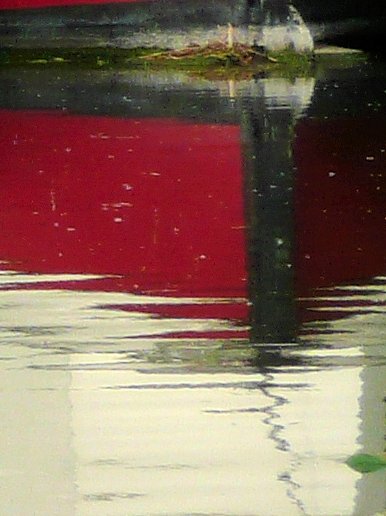

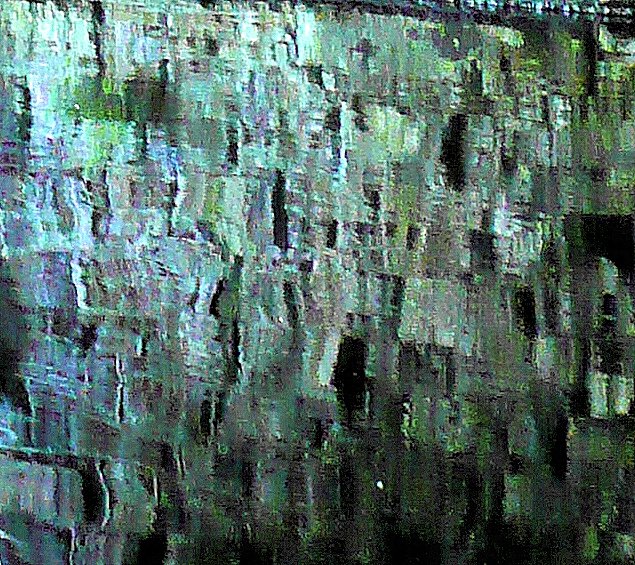
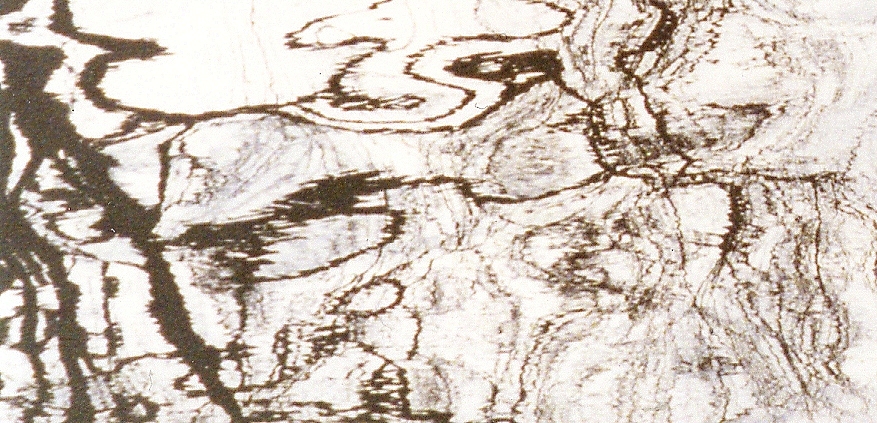
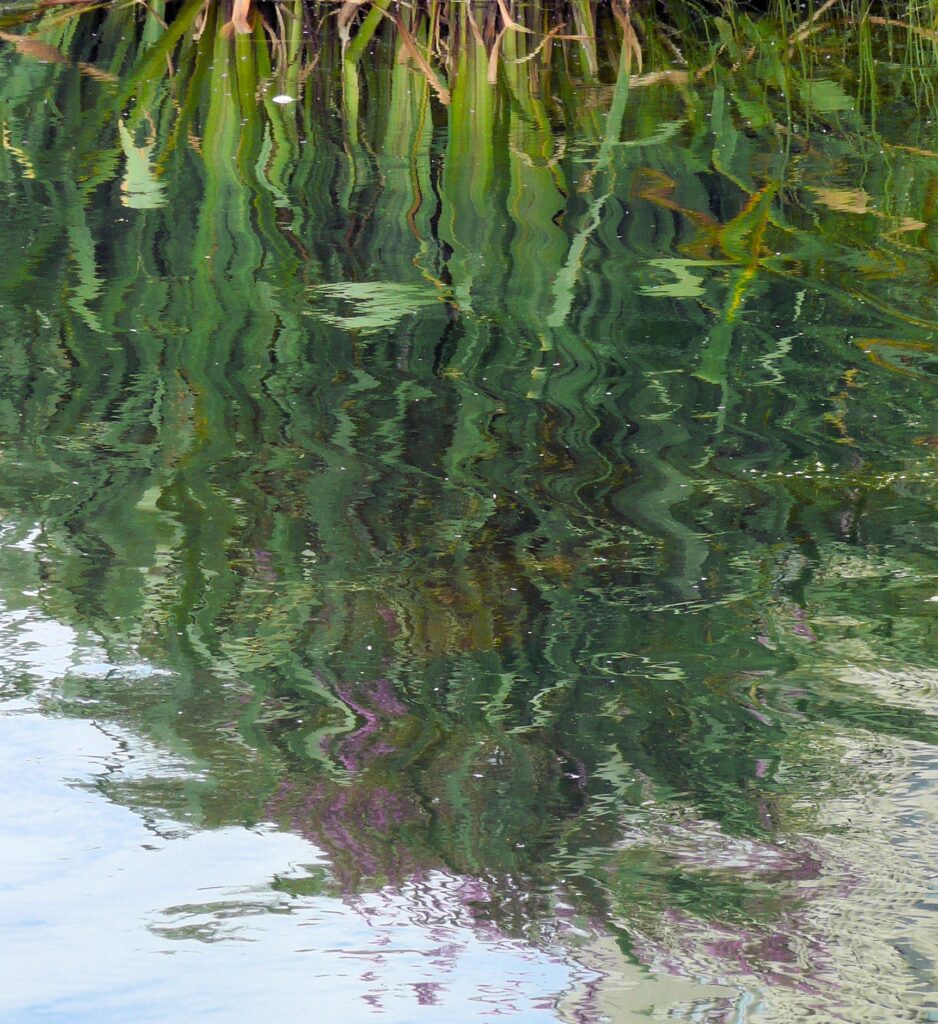
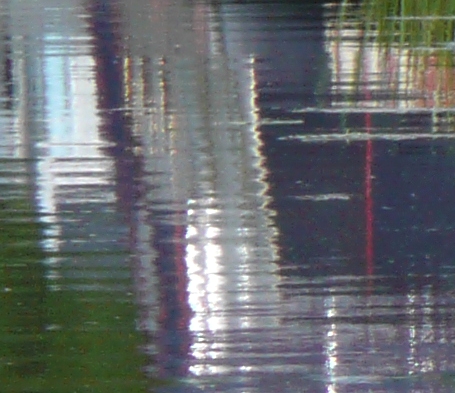
3. Memory
You could make an abstract painting based on a memory of a place or experience. Memories are often charged with emotion as well as being a visual mental record. The former was hugely important to Kandinsky and we will discuss that further during the last session when we take a brief look at abstract expressionist painters so you may like to leave this one till Week 4.
Kandinsky’s path to abstraction was rooted in love for his native Russia; village life, Moscow and the folk lore. Many of his earlier works show this vividly and the accent on colour and mood was clear. He heard sounds when he saw colour. For Kandinsky yellow was an exuberant trumpet and later in life he designed ballet sets for for Mussorgsky’s Pictures at an Exhibition. It is no surprise that some of his works were also titled in musical terms like Improvisation, Composition Fugue etc but there was also Deluge, …. and other exciting works that stemmed from different experiences.
https://www.pinterest.co.uk/jhall1282/abstraction/wassily-kandinsky/
4. Still Life
William Scott painted abstracted still life subjects reducing them to their bare essentials and playing with perspective. Far simpler than cubist paintings you may like to work in a similar way to Scott or emulate a cubist painting with a simple set up of your own objects
https://www.pinterest.co.uk/jhall1282/abstraction/william-scott/
5. Figures and Animals; simplification
If you would prefer to work from figures or animals look at Picasso’s drawings showing a bull in a series of works in which the bull is reduced to very basic shapes.
https://www.pinterest.co.uk/jhall1282/abstraction/picasso/
Kandinsky made some drawings of a dancer reduced to geometric curves and angular lines. The lines and arcs described her movement as she danced. In the absence of a live model similar schematic drawings could be made photographs of ballet dancers, judo fights,or footballers etc.
https://www.pinterest.co.uk/jhall1282/abstraction/wassily-kandinsky/
A group of drawings could be put together so that that the lines overlapped or drawings could be made from groups of footballers or rugby players interacting. It would be easiest to design the work first then transfer it to the support for painting. You may also like to work out which lines would be the thickest and if colour was used to which areas it should be applied and how.
6. Contour and blind contour drawing
If you have any rapid sketches of birds, animals or plant forms from life you can use their shapes and rearrange them to form an interesting pattern that can be blocked in initially with flat colour. This becomes even more interesting where shapes overlap and you could work with transparent colour to show this or by changing the tone or colour of opaque paint.You could also make some blind contour drawings and use them in the same way. These are made by looking at the subject while you are drawing but not looking at your paper.

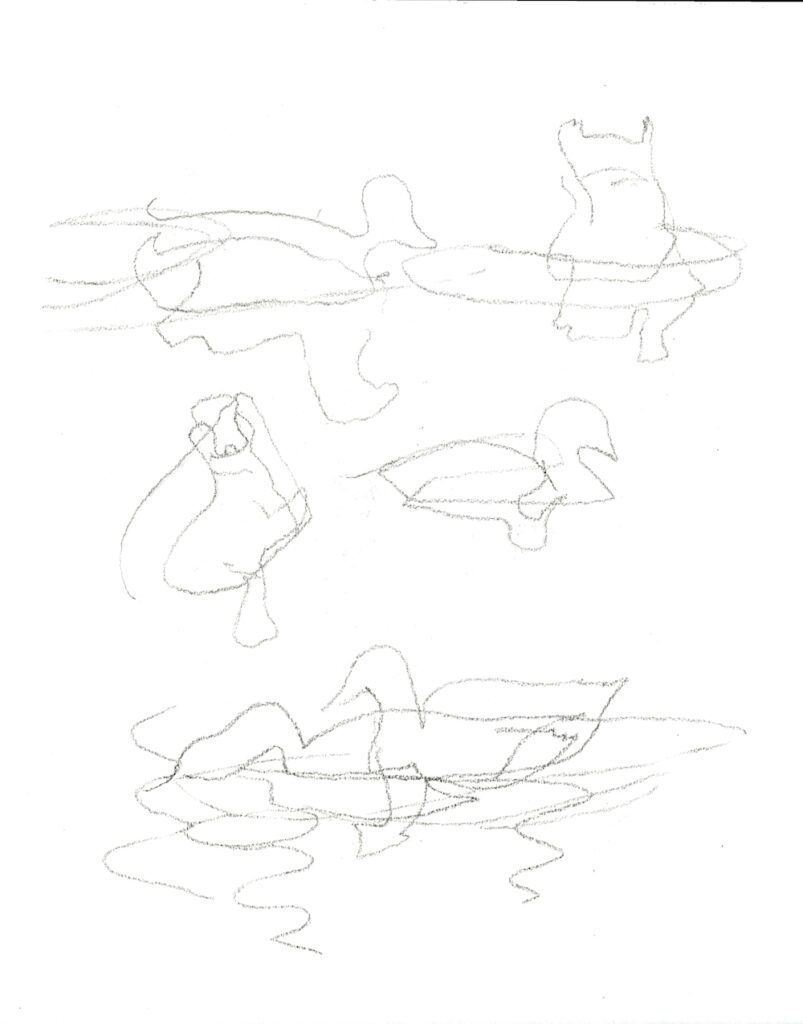
These could be traced and arranged to overlap or cut up as we did this week and used as a starting point for an abstract painting.
Your paintings:
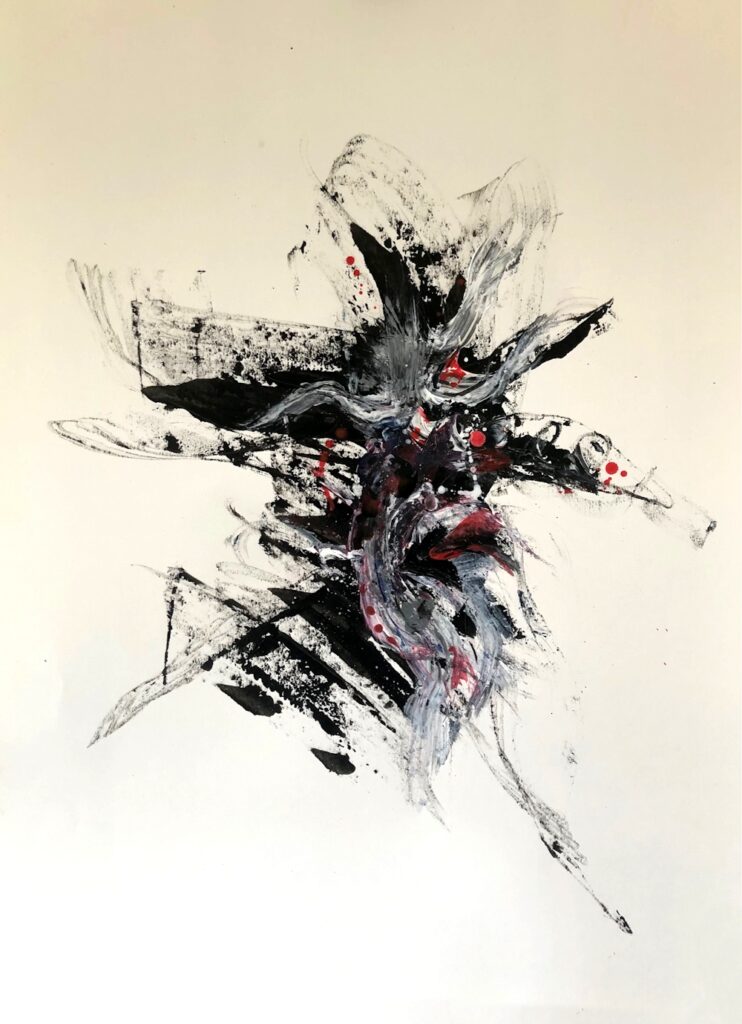
by Virginia
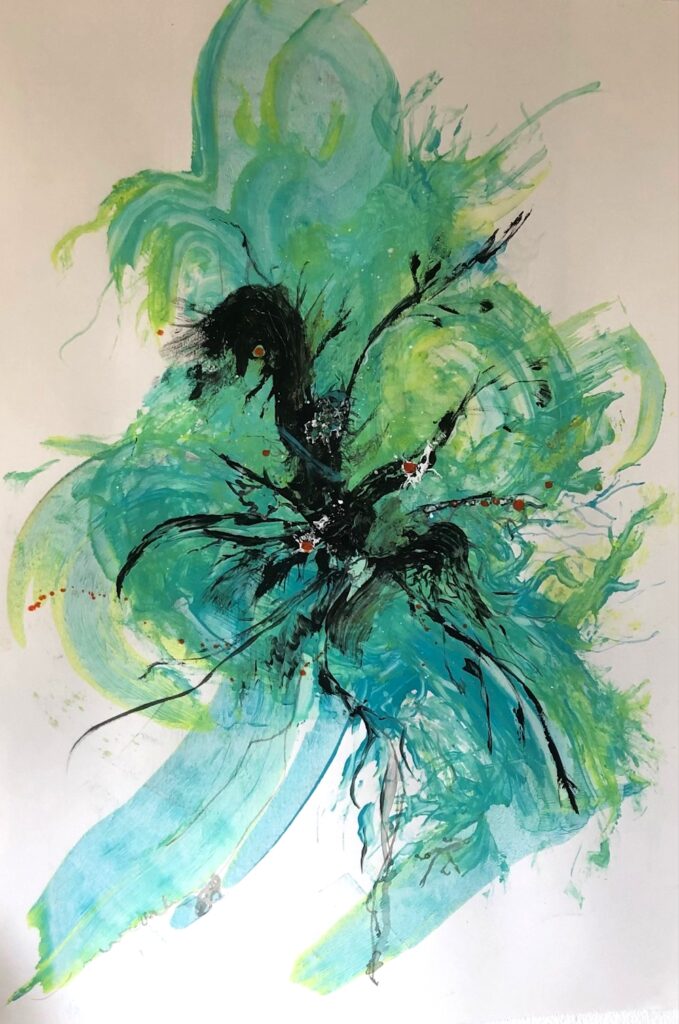
by Virginia
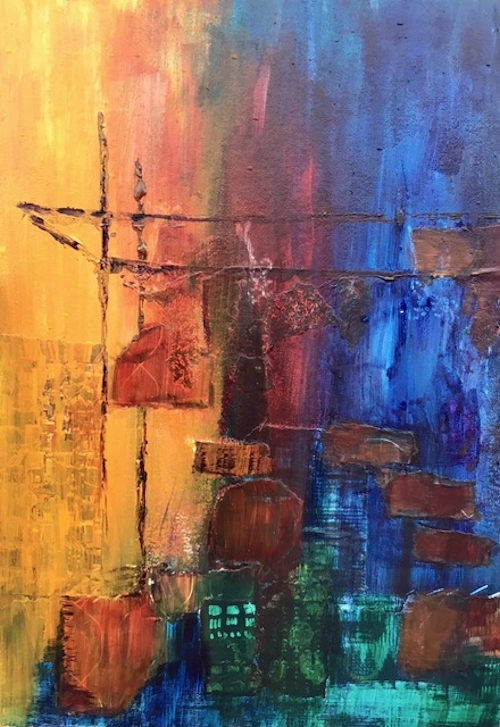
A Memory by Sandra

by Sandra
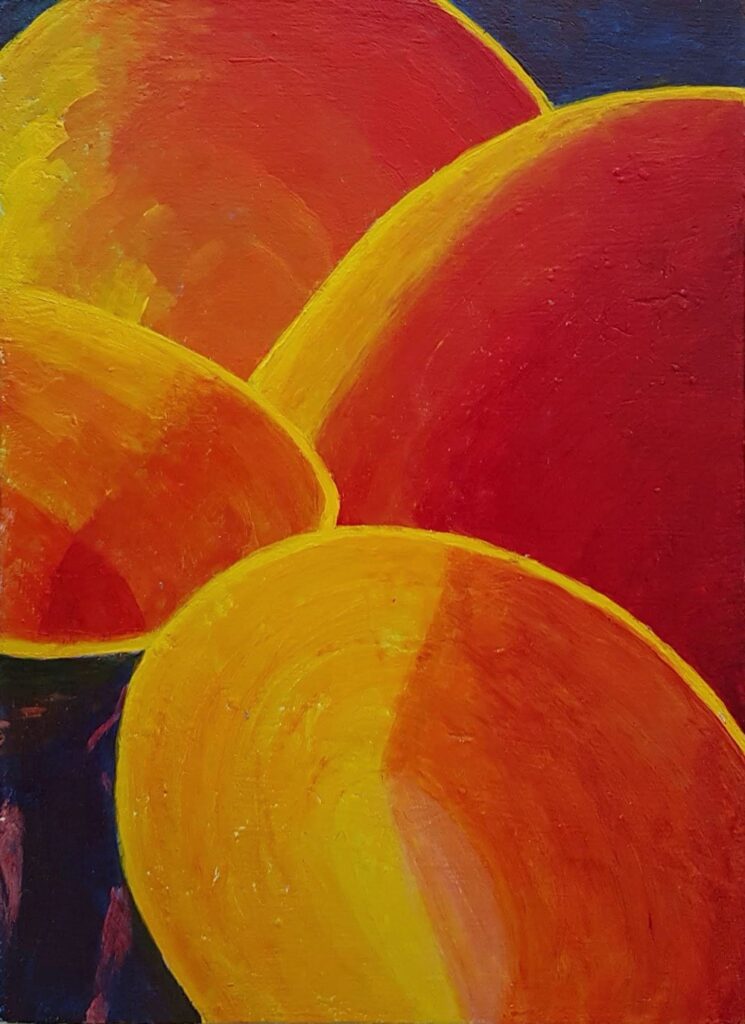
by Malcolm
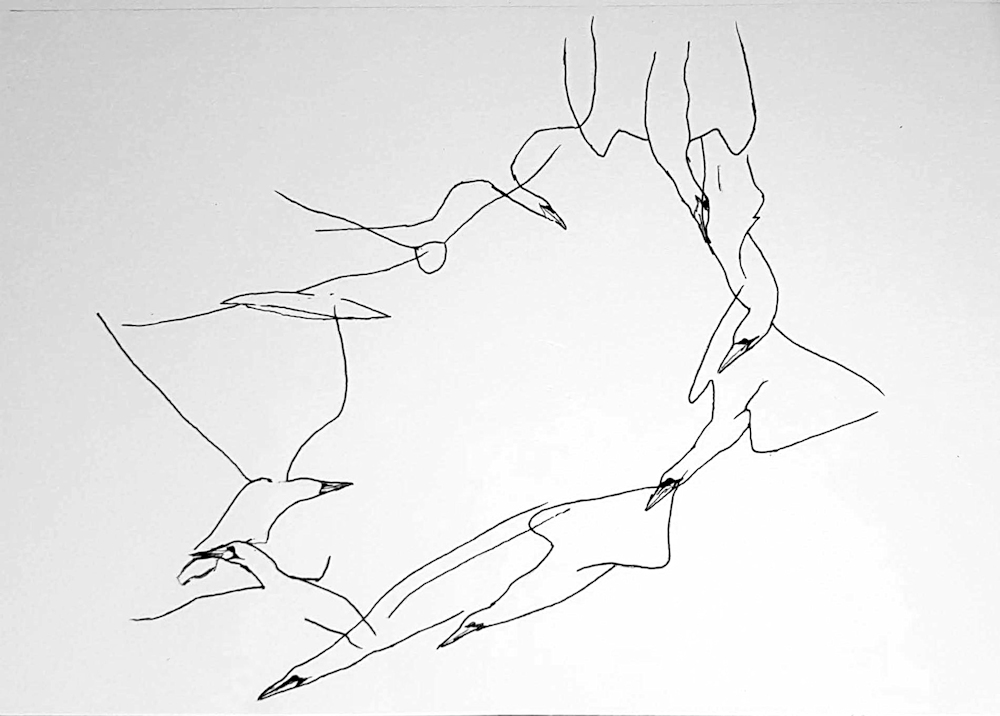
The Gannet Spies, Dives, Gulps and Flies
Ink by Malcolm

by John

by Heather

by Elizabeth
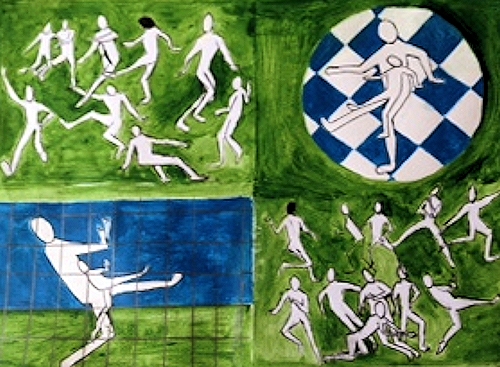
by Elizabeth